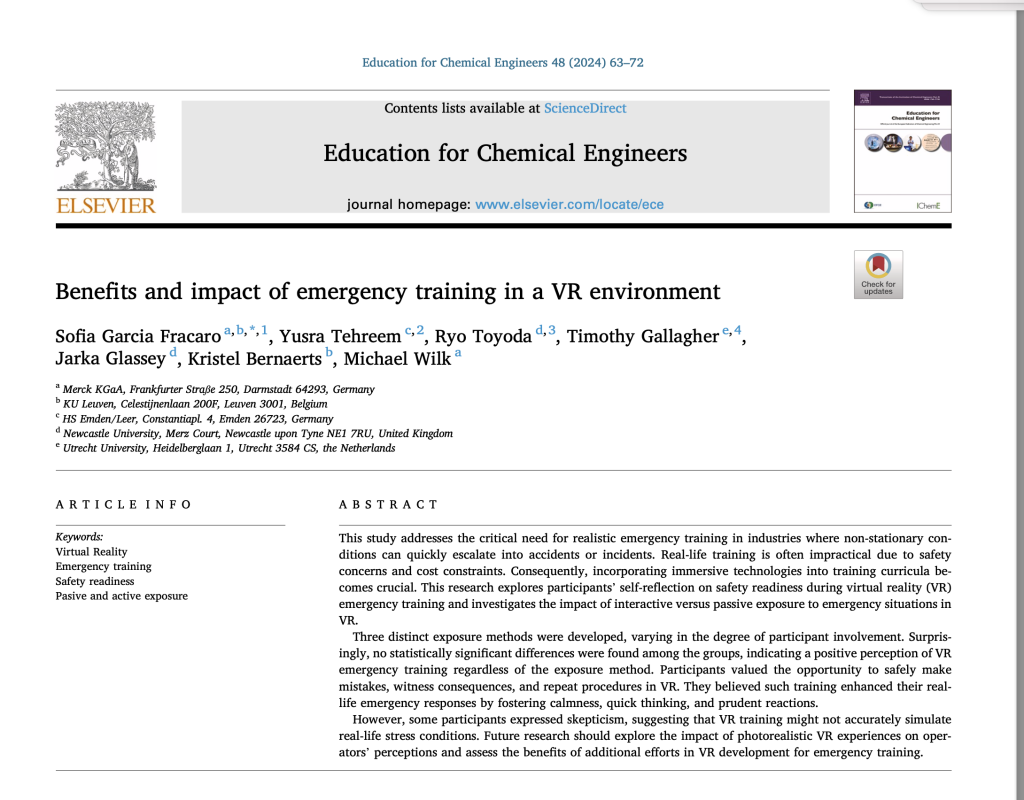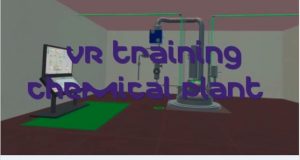Benefits and impact of emergency training in a VR environment
S. Garcia Fracaro, Y. Tehreem, R. Toyoda, T. Gallagher, J. Glassey, K. Bernaerts, M. Wilk
In Education for Chemical Engineers, Volume 48, 2024, Pages 63-72: https://doi.org/10.1016/j.ece.2024.05.004
Abstract
This study addresses the critical need for realistic emergency training in industries where non-stationary con- ditions can quickly escalate into accidents or incidents. Real-life training is often impractical due to safety concerns and cost constraints. Consequently, incorporating immersive technologies into training curricula be- comes crucial. This research explores participants’ self-reflection on safety readiness during virtual reality (VR) emergency training and investigates the impact of interactive versus passive exposure to emergency situations in VR.
Three distinct exposure methods were developed, varying in the degree of participant involvement. Surpris- ingly, no statistically significant differences were found among the groups, indicating a positive perception of VR emergency training regardless of the exposure method. Participants valued the opportunity to safely make mistakes, witness consequences, and repeat procedures in VR. They believed such training enhanced their real- life emergency responses by fostering calmness, quick thinking, and prudent reactions.
However, some participants expressed skepticism, suggesting that VR training might not accurately simulate real-life stress conditions. Future research should explore the impact of photorealistic VR experiences on oper- ators’ perceptions and assess the benefits of additional efforts in VR development for emergency training.







